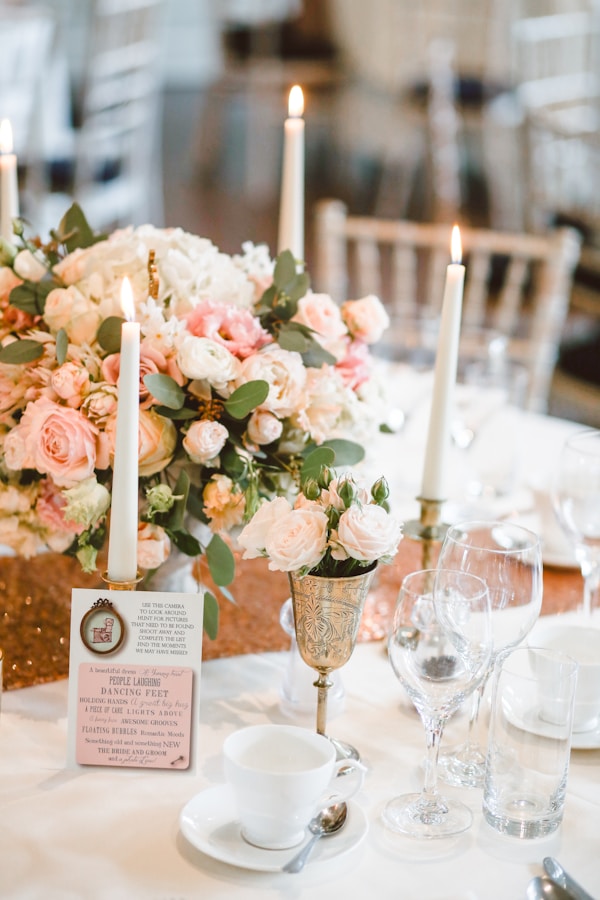Choosing a Wedding Dress That Enhances Your Natural Features: A Comprehensive Guide
Choosing a Wedding Dress That Enhances Your Natural Features: A Comprehensive Guide
Understanding the Importance of a Wedding Dress
Your wedding day is one of the most significant events in your life, and your dress is a symbol of that special moment. Choosing a wedding dress that enhances your natural features is crucial not only for looking beautiful but also for feeling confident. In this article, we will explore how to select the perfect dress, taking into account your body shape, personal style, and various factors that contribute to a stunning appearance.
1. Knowing Your Body Shape
Before diving into fabrics and trends, understanding your body shape is essential. Different dresses flatter different silhouettes, and identifying your shape can guide you in finding the best choices. There are generally five body shapes: hourglass, pear, apple, rectangle, and inverted triangle. Here’s a breakdown of each and how they can influence your dress decision:
| Body Shape | Dress Style Suggestions |
| Hourglass | Mermaid or A-line dresses that highlight your curves. |
| Pear | A-line or empire waist dresses that draw attention to the upper body. |
| Apple | Empire waist or flowy dresses that offer structure without clinging. |
| Rectangle | Sheath or ball gown styles that create the illusion of curves. |
| Inverted Triangle | A-line or fit-and-flare styles that balance broader shoulders. |
2. Celebrating Your Personal Style
Your wedding dress is an extension of your personal style. Whether you gravitate towards classic, bohemian, vintage, or modern looks, incorporating your style helps you feel authentic and comfortable. Begin by gathering inspiration from magazines, bridal websites, and social media platforms like Pinterest and Instagram. Create a mood board that reflects your aesthetic and use it as a guide during your shopping experience.
Choosing Colors
When it comes to color, white is traditional, but there are other shades to consider such as ivory, champagne, or even bold colors if they resonate with you. For example, in 2023, several celebrities chose non-traditional colors for their Wedding dresses, setting new trends within the nuptial fashion landscape. Think about what colors compliment your skin tone and highlight your features.

3. Consider Fabric and Comfort
The fabric of your dress plays a significant role in both the look and feel of the gown. Fabric influences how a dress drapes on your body, so it's essential to choose materials that enhance your features while also being comfortable. Common fabrics include:
- Satin: Smooth and luxurious, it reflects light beautifully.
- Tulle: Lightweight and airy, perfect for layered skirts.
- Lace: Adds intricate detail and texture.
- Chiffon: Flowing and soft, ideal for a romantic look.
Additionally, consider the climate on your wedding day. If you're having a summer wedding, lightweight fabrics that allow for breathability are ideal, while heavier fabrics may be more suitable for fall or winter weddings.
4. Finding the Right Fit
Fit is paramount to ensuring your dress enhances your natural features. When trying on dresses, keep the following tips in mind:
- Always try on dresses in your size. Tailors can adjust the fit, so it's better to start with the appropriate size.
- Don't be afraid to ask for help. Bring friends or family members who can provide honest feedback.
- Walk around and sit down in the dress to ensure comfort and mobility.
Many bridal shops also offer custom fitting services, which can be beneficial for creating a dress that perfectly matches your shape.
5. Accessorizing Your Look
Accessories can make or break an outfit, especially a wedding dress. Consider incorporating these elements for a cohesive look:
- Veils: A classic touch that can add drama and elegance.
- Jewelry: Choose pieces that complement your dress without overwhelming it.
- Footwear: Ensure your shoes are stylish yet comfortable for dancing the night away.
Choosing the Right Undergarments
Another essential aspect of your wedding outfit is choosing suitable undergarments. Supportive, well-fitted bras and shapewear can enhance the overall fit of your dress. Many bridal shops can recommend undergarment options that best suit your gown, so don’t hesitate to ask.
6. Setting a Budget
While it’s easy to get caught up in the excitement of choosing the perfect dress, it’s essential to set a budget beforehand. Quality Wedding dresses can range significantly in price. If you're in the process of planning a wedding in the United States, for example, the average wedding dress price hovers around $1,800 but can go as low as $500 or as high as $10,000, depending on the designer and embellishments.
Consider additional costs, such as alterations, accessories, and cleaning after the wedding. Having a clear budget can help narrow your options and reduce stress.
7. Shopping Experience
The experience of shopping for a wedding dress should be enjoyable and memorable. Here are some tips to enhance your journey:
- Make an appointment at bridal shops to ensure dedicated assistance.
- Limit your guests to a small circle of trusted friends or family for a more focused experience.
- Be open to trying on dresses you might not initially consider; you may be surprised by what flatters your figure.
Conclusion: Embracing Your Unique Beauty
Choosing a wedding dress that enhances your natural features is a journey that combines understanding your body, celebrating your style, and curating a look that makes you feel beautiful. Remember to enjoy the process, focus on what makes you feel comfortable and confident, and don’t hesitate to seek advice from professionals in the bridal industry. Ultimately, your wedding dress should reflect your personality and make you feel as stunning as you truly are. Happy wedding planning!
For additional questions or tips on selecting the perfect dress, remember to consider your body shape, budget, and the overall theme of your wedding as you move forward with your selection.
